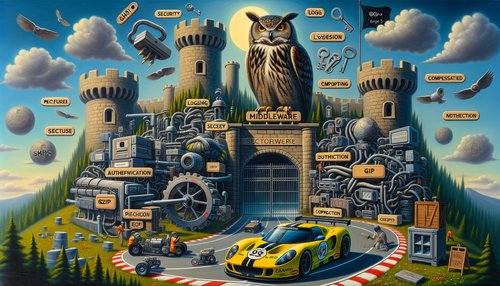Unlock the Power of Django Receivers - An Essential Tool for Developing Web Applications
Django is a powerful web framework that allows developers to quickly create applications and websites. One of the most powerful tools at a developer’s disposal is Django’s receivers. Receivers are functions that are triggered whenever a specific action is performed. They are a fundamental part of the Django framework and can be used to customize the behavior of an application.
Receivers are useful for a variety of tasks, such as cleaning up data, logging events, and sending notifications. They are also an important tool for developing web applications, as they allow developers to automate tasks and create more efficient applications.
Receivers are triggered by signals. Signals are special functions that are sent to receivers whenever a specific action is performed. For example, when a user registers for an account on a website, a signal is sent to the receiver, which will then handle the registration process.
The most common types of receivers are post_save, pre_save, and post_delete. Post_save is triggered whenever an object is saved to the database. Pre_save is triggered before an object is saved to the database. Post_delete is triggered whenever an object is deleted from the database.
To use receivers, developers must create a receiver function and register it with the signal. To register a receiver, developers must use the @receiver decorator. This decorator is used to specify the signal that will trigger the receiver.
For example, to create a receiver that is triggered when a user registers for an account, developers can use the following code:
@receiver(post_save, sender=User)
def user_registered(sender, instance, created, **kwargs):
if created:
# Do something when the user registers
The code above creates a receiver that is triggered whenever a user registers for an account. The receiver will then handle the registration process.
Django receivers are an essential tool for developing web applications. They allow developers to automate tasks and create more efficient applications. Receivers are triggered by signals, which allow developers to customize the behavior of an application. With receivers, developers can easily create powerful web applications.
Recent Posts

Unlocking the Power of Terraform: Mastering Conditional Expressions for Smarter Infrastructure Automation

Unveiling the Future: Navigating the Public Interface of Apache Airflow for Streamlined Workflow Management
Apache Airflow
Mastering Workflow Automation: Unconventional Apache Airflow How-To Guides for the Modern Data Enthusiast
Apache Airflow
Mastering the Cloud: Unveiling AWS CloudFormation Best Practices for Seamless Infrastructure Management



